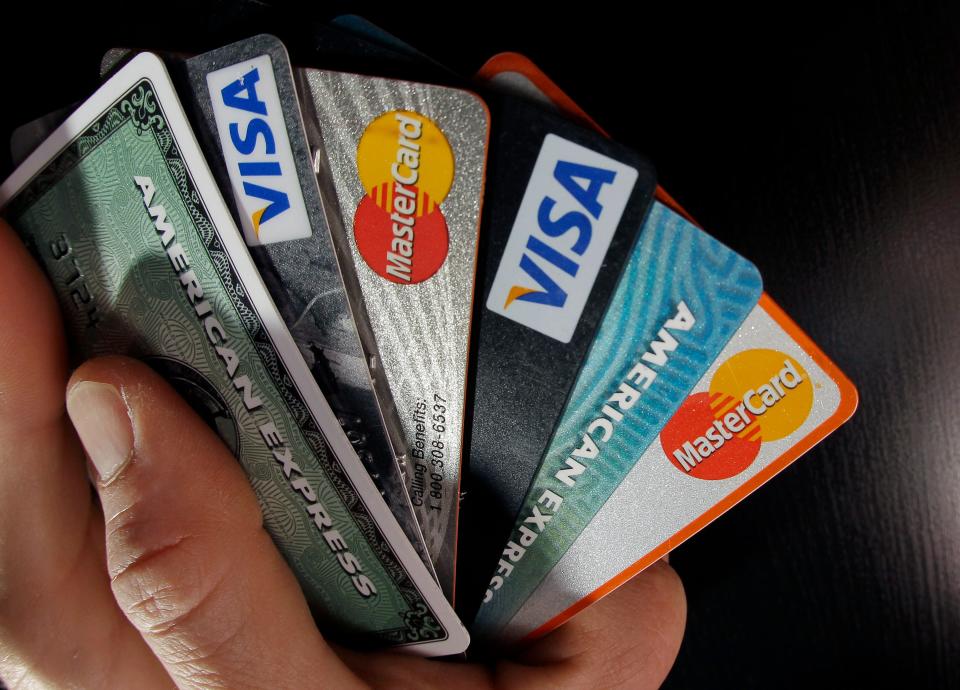I keep getting rejected for credit cards. How do I fix that?
There’s a frustrating chicken-or-egg dilemma in the financial world: You try to get access to a credit card to build a credit history, but you can’t get approved without a history. And this is the track record that's used to generate your credit score.
This can be especially frustrating for recent college graduates, even those with student loans. Unless they started making payments on that debt during school, they haven't necessarily established credit history.
So if you keep getting rejected from credit card companies, don’t stress. There are solutions, starting with a secured credit card.
A secured credit card is essentially a credit card with training wheels, which is designed to help you establish or rebuild credit history. The credit card company isn’t yet convinced that you’re going to be a reliable borrower, so it asks you to put down a refundable deposit. Oftentimes, your deposit functions as your credit limit. So, if you put down a $250 deposit, then you have a $250 credit limit. This collateral reduces risk for the credit card company because if you miss your payments, it can simply take your deposit to cover the debt.

Social Securit and Trump: Here’s what Trump’s proposed budget could mean for your benefits
Baby power: Gerber looks for its next 'spokesbaby.' Here's how to enter your child in the national contest
Small purchases on a secured card
After you have a secured card, you want to make just one or two small purchases each month and then pay off the bill on time and in full. You don’t want to spend more than 30% of your available credit limit. For a $250 credit limit, the max you want to spend is $75. A simple solution is just to put a recurring charge, like your Netflix subscription, on your credit card and then automate it to pay off each month. That way you don’t even have to carry it in your wallet.
You’ll start to see your credit score rise steadily, and once you reach 700+, you can apply for a regular, unsecured credit card. Once approved, you can close your secured card and get your deposit back.
Unfortunately, not everyone gets approved for a secured card. There are many reasons for this, but common ones include having low or no income, a recent bankruptcy, overdue bills that were recently sent to collections or a history of missed payments.
Before you completely ditch the idea of a secured card, you should also check to see whether you can get approved at a local community bank or credit union, especially if you have a history of accounts in good standing.
But if that’s not an option, you can try others:
Credit-builder loan
Instead of the traditional loan dynamic in which a lender gives you money upfront and you repay it in monthly installment plus interest, credit-builder loans are put into a savings account or certificate of deposit.
You then make monthly payments for a set period of time (e.g., six months or 24 months) and these on-time payments are reported to the credit bureaus to help you build, or repair, credit history. Once you’ve completed repayment, the funds are then dispersed to you. However, this isn’t a free service; you’ll be charged interest and possibly administrative fees.
This type of loan can be found at credit unions, community banks, and online lenders. Be sure to do your due diligence and research the details of your specific credit-builder loan before taking one.
Authorized user
Does your spouse or family have strong credit and good financial habits? You could ask about becoming an authorized user on one of their credit cards. This basically allows you to ride their financial coattails and have their positive credit history affect yours. You will get access to your own card, but the primary account holder will be able to see any charges you make.
The risk of being an authorized user is of course that a mistake made by the primary account holder will now impact you, too.
Also, there’s a catch: You need to ensure the company reports authorized users to the credit bureaus. Otherwise, it doesn’t actually help build your credit.
Focus on what you can control
For those who are in the position of trying to rebuild and correct past mistakes, it’s important to evaluate what is already within your control. A negative mark on your credit report usually remains for seven to 10 years, but the good news is that you can minimize the impact by pumping positive information onto your report. If you currently have access to lines of credit, such as an auto loan or student loans, then make sure you’re always making those payments on time.
In addition, you should pull copies of your credit reports to make sure everything is accurate. Misreporting happens, and a mistake you didn’t even make could be weighing down your credit score. You can get your reports for free from annualcreditreport.com or by going directly to credit reporting companies Experian, TransUnion and Equifax.
The process of building your credit history from scratch or rehabilitating it after past mistakes takes time and diligence, but it’s certainly something you can handle.
Erin Lowry is the author of Broke Millennial: Stop Scraping By and Get Your Financial Life Together” and "Broke Millennial Takes On Investing.”
This article originally appeared on USA TODAY: Credit cards: Secured cards, other steps to build your credit history

